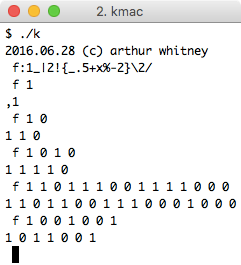15
1
Given a binary integer inclusively between 0 and 1111111111111111 (i.e. a 16-bit unsigned integer) as input, output the same integer in negabinary.
The input can be in whatever format is most convenient for your language; for example, if it is easier for the program to handle input with 16 digits, like 0000000000000101, rather than simply 101, you can write the program to only accept input that way.
Sample I/O
> 1
1
> 10
110
> 1010
11110
> 110111001111000
11011001110001000
> 1001001
1011001
Here is a sample program I wrote that does base conversions, including negative and non-integer bases. You can use it to check your work.

2The link appears to be down, which is a prime reason for why we require questions to be self-contained these days – Jo King – 2019-11-28T23:00:05.023
Just to clarify a bit further, the input and output would have to be binary, right? I mean: character strings of
0s and1s. Looks clear to me, but an answer makes me doubt lightly... – Joanis – 2012-01-07T05:21:46.583@M.Joanis The input is binary, the output is negabinary (which looks exactly the same as binary--a string of zeroes and ones--but the way the number is interpreted is different.) – Peter Olson – 2012-01-07T14:58:37.523